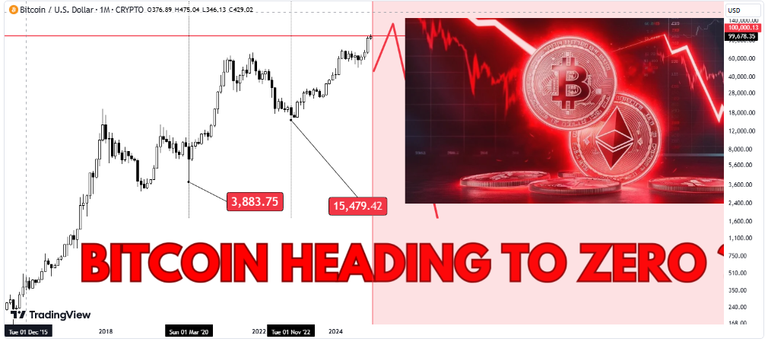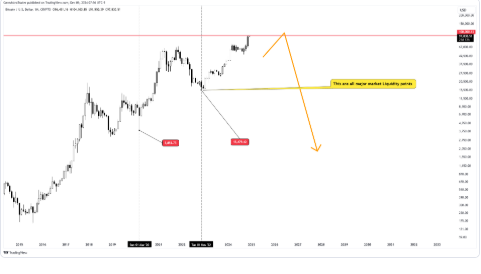
Before you all feel any trauma or alarm from the title, I urge you to stay calm and read this idea carefully to understand the broader perspective.
History of Bitcoin: The Rise of Decentralization
Bitcoin's journey began in 2008, when an anonymous figure under the pseudonym Satoshi Nakamoto introduced it through a white paper titled Bitcoin: A Peer-to-Peer Electronic Cash System. Nakamoto’s vision was to create a decentralized currency, free from government or central bank control, using blockchain technology. The first block, called the genesis block, was mined in January 2009, marking the birth of Bitcoin.
Despite Nakamoto's critical role in Bitcoin's inception, his true identity remains a mystery, leading to much speculation over the years. Some have theorized that he could be a single individual, while others suggest that Nakamoto could be a group of people or even a government agency. After releasing the software and participating in the early days of the network, Nakamoto gradually withdrew from public involvement, leaving the Bitcoin community to grow independently. This disappearance into the shadows has only added to the intrigue and mystique surrounding the cryptocurrency's origins.
While Nakamoto remains a key figure in Bitcoin's history, he has remained silent since 2011, with no clear explanation as to why he stepped back.

1BIS: The Puppet Master of Global Finance

The Bank for International Settlements (BIS) is often referred to as the "central bank of central banks" due to its unique role in fostering international monetary and financial cooperation. Established in 1930, it serves as an umbrella organization for central banks worldwide, providing a platform for collaboration and offering banking services to them. The BIS is headquartered in Basel, Switzerland, and its primary objectives are to promote financial stability, monitor economic trends, and facilitate communication between global central banks, such as the Federal Reserve, European Central Bank, and others.

Over time, the BIS has played a crucial role in shaping global monetary policies, overseeing financial markets, and fostering agreements between the world's leading financial institutions. It is instrumental in setting regulatory standards and guidelines that many countries' central banks follow. This level of control and influence positions the BIS at the centre of international financial governance, which is critical when discussing the future of currencies, including Bitcoin and the potential shift to Central Bank Digital Currencies (CBDCs).

As a body that influences the direction of global banking, the BIS has been actively involved in discussing and exploring the future of digital currencies. Given the growing interest in decentralized cryptocurrencies, such as Bitcoin, the BIS has expressed concerns over the stability of decentralized systems and has advocated for centralized digital currencies to ensure that monetary policy can remain under control, furthering the possibility of a CBDC rollout in the future.
Why Bitcoin’s Fall to Zero Could Be a Strategic Move
Now, with global economies struggling under record-high debt levels, central banks might see Bitcoin as a bubble ready to pop. The BIS could leverage its influence to push for a CBDC revolution, positioning these centralized digital currencies as “safer” and more reliable alternatives to Bitcoin. By orchestrating a dramatic collapse in Bitcoin, the narrative could shift, convincing the public that decentralized currencies are unstable and unsustainable.

CBDCs are fundamentally different from Bitcoin:
Fully controlled by central banks.
Allow tracking and surveillance of every transaction.
Provide central banks the ability to impose negative interest rates or freeze funds.
This shift would mark a return to centralized control, with individuals losing the financial freedom Bitcoin promised.Was This the Plan All Along?
It’s not far-fetched to believe that Bitcoin’s rise and fall have been part of a larger test. During the pandemic, Bitcoin surged on the back of mass media promotions and institutional FOMO. Billionaires like Elon Musk promoted Dogecoin and Bitcoin, fueling speculative buying. Yet, when the dust settled, the same institutions that promoted Bitcoin quietly accumulated it during crashes.

With Bitcoin at $100,000 now, the euphoric belief in its unstoppable rise mirrors past market bubbles. Could this be the final phase of Bitcoin’s journey before an engineered collapse leads to the introduction of CBDCs as the “solution”?
What’s Next?
If Bitcoin does crash to zero, it will be a defining moment for cryptocurrencies and global finance. CBDCs would emerge as the dominant narrative, backed by the BIS and central banks, with promises of stability, security, and control. However, it would come at the cost of financial freedom and decentralization
SOURCE; https://www.tradingview.com/chart/BTCUSD/TVZ4YA8k-Bitcoin-Going-to-Zero-The-End-of-Bitcoin/
Congratulations @sirfx! You have completed the following achievement on the Hive blockchain And have been rewarded with New badge(s)
Your next target is to reach 150 posts.
You can view your badges on your board and compare yourself to others in the Ranking
If you no longer want to receive notifications, reply to this comment with the word
STOPCheck out our last posts: